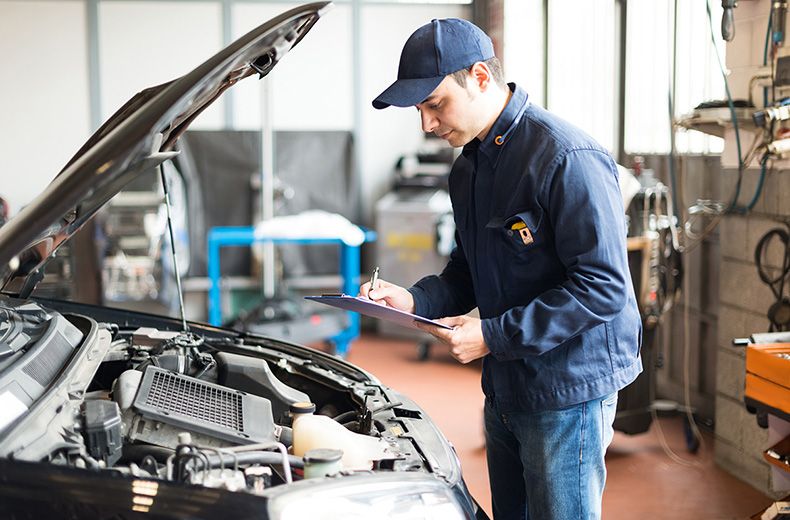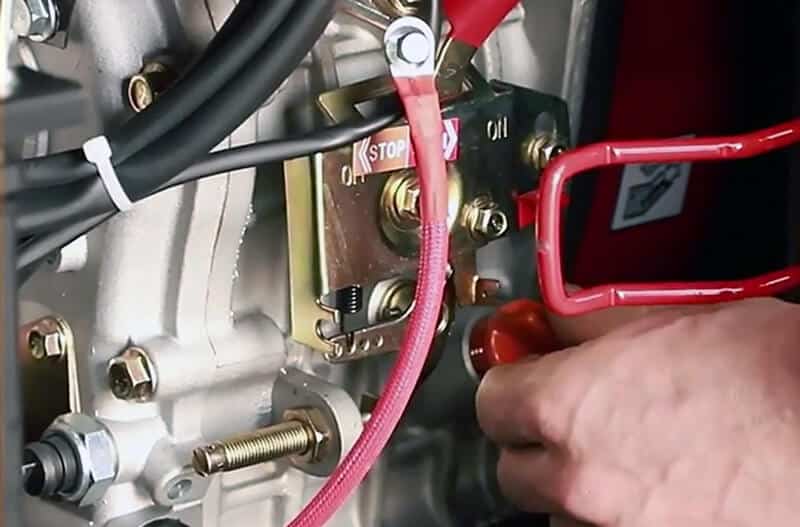What Happens During an MOT Test?

An MOT test is a legal requirement for most vehicles in the UK once they reach three years of age. Conducted annually, it ensures that vehicles meet road safety and environmental standards. While many drivers understand the necessity of an MOT, the actual process can seem a little unclear. Knowing what happens during the test can help alleviate concerns and ensure that a vehicle is properly prepared.
The Initial Check-in Process
When a vehicle is taken to an authorised MOT test centre, the process begins with the initial check-in. The vehicle’s registration is recorded, and the MOT history is checked to note any previous advisories or failures. The tester will also confirm the vehicle’s make, model, and age before proceeding with the inspection. If the car has any modifications, such as tinted windows or aftermarket lighting, the tester may check whether these comply with legal requirements.
Exterior and Structural Examination
The MOT test includes a thorough examination of the vehicle’s exterior. The bodywork is inspected for excessive corrosion or damage that could affect the safety of the car. Any sharp edges or loose panels that could pose a risk to pedestrians or other road users are noted. Doors, bonnet, and boot mechanisms are tested to ensure they open and close securely. The tester will also check that mirrors are secure and provide an adequate field of vision.
Windscreens and windows are assessed for visibility and damage. Cracks or chips larger than a certain size within the driver’s line of sight can result in a failure. Wipers and washers must be in working order to ensure the driver can clear rain, dirt, and debris from the windscreen effectively.
Lighting and Signalling Checks
All exterior lights, including headlights, indicators, brake lights, fog lights, and number plate lights, are checked for functionality and correct positioning. The condition of the lenses and reflectors is also assessed to ensure they are clean and not excessively faded or damaged. Any issues with the lighting system, such as incorrect colour, failure to illuminate, or flickering, can lead to an MOT failure.
Horn operation is tested as part of the vehicle’s signalling system. It must be loud and clear enough to alert other road users. The tester will also check the correct operation of hazard lights and dashboard warning indicators.
Tyre and Wheel Inspection
Tyres must meet the minimum legal tread depth requirement and be free from cuts, bulges, or excessive wear. The MOT tester will examine the condition and pressure of all tyres, ensuring they are suitable for road use. Uneven tyre wear could indicate a problem with wheel alignment or suspension, which might be noted as an advisory.
Wheel condition is also assessed, with particular attention given to damage or excessive corrosion that could weaken the structure. The wheel nuts and bolts must be secure, and if locking wheel nuts are fitted, the appropriate key should be available.
Braking System Assessment
The braking system is one of the most crucial aspects of the MOT test. The tester will conduct a visual inspection of brake components, including discs, pads, and callipers, to check for excessive wear, corrosion, or leaks. The vehicle is then placed on a rolling road to measure braking efficiency. This ensures that both service brakes and handbrake operate correctly and provide adequate stopping power.
Any imbalance between the braking force on different wheels can result in an advisory or failure. The tester will also assess the brake pedal travel and response, ensuring that there is no excessive play or sponginess that might indicate air in the brake lines or fluid leaks.
Steering and Suspension Checks
The steering system is checked to ensure it operates smoothly and does not have excessive play or stiffness. The tester will inspect the steering wheel and column for any signs of wear, damage, or malfunction. If the vehicle has power steering, the fluid levels and condition are also examined.
Suspension components such as shock absorbers, coil springs, and linkages are tested for signs of wear or damage. The vehicle may be subjected to a bounce test, where the tester pushes down on each corner of the car to see how quickly it settles back into position. Excessive bouncing or knocking noises may indicate worn suspension components, leading to a failure or advisory.
Exhaust and Emissions Testing
The exhaust system must be secure and free from leaks, excessive noise, or visible smoke. The tester will inspect the exhaust pipe, catalytic converter, and silencers to ensure they are in good condition. If an exhaust system emits excessive smoke or noise, the vehicle may fail the test.
Emissions are checked using a gas analyser to measure the level of pollutants in the exhaust fumes. Petrol and diesel vehicles have different emission limits, and if a car exceeds these, it will not pass the MOT. Diesel vehicles undergo a smoke test to check for excessive soot emissions, with stricter rules applying to vehicles fitted with a diesel particulate filter (DPF).
Seatbelt and Interior Safety Checks
All seatbelts must be present, secure, and in good working condition. The tester will check for fraying, cuts, or excessive wear that could compromise their effectiveness. Seatbelt mechanisms must lock correctly when pulled sharply and retract properly when released.
The driver’s seat must be securely fixed, and adjustable seats must lock firmly in place. Other interior features, such as dashboard warning lights, are checked to ensure they illuminate correctly. If an airbag warning light is on, this could result in a failure as it suggests a potential safety issue with the system.
Registration Plates and Vehicle Identification
The number plates must be clean, clearly legible, and correctly spaced according to legal requirements. If plates are faded, broken, or obscured by dirt, they could result in a failure. The vehicle identification number (VIN) is also checked to ensure it matches official records and is clearly visible.
Final Assessment and Test Outcome
Once all checks have been completed, the tester will determine whether the vehicle has passed or failed. If no serious faults are found, a pass certificate is issued, and the vehicle is roadworthy for another year. If any advisories are noted, the driver is informed of potential issues that may require attention in the future.
If the vehicle fails, the test report will outline the reasons. Major and dangerous faults must be repaired before the vehicle can be driven again, while minor faults may still allow the vehicle to pass but will need to be rectified. Many test centres offer a free retest within a specific time frame if repairs are carried out promptly.
Understanding what happens during an MOT test can help drivers prepare in advance and avoid common failures. Keeping a vehicle well-maintained throughout the year, rather than just before the MOT, ensures it remains safe and compliant with UK road laws.




